Babi Yar
One of the largest and by far the most well-known mass execution committed by an Einsatzgruppe was the one at Babi Yar between September 29 and 30, 1941. The 29th German army corps captured Kiev after 45 days of fighting on September 19, 1941. When Kiev was occupied by the Germans about 130,000 Jews live in the city and came under german control. A few days after the occupation, several explosions occurred in central Kiev killing several German officers. At first the Germans thought it was sabotage but it turned out that it was the Soviet security service NKVD who lingered in the city and carried out the explosions. In the investigations of the explosions, the Germans found information that further blasts were planned. In connection with the explosions, Kiev’s military commander, Major General Friedrich George Eberhardt, the district’s Supreme SS and police chief (Höher SS- und Polizeiführer) met SS-Gruppenführer Friedrich Jeckeln, commander of Einsatzgruppe C, Brigadeführer Otto Rasch, as well as the commander of Sonderkommando 4a Standartenführer Paul Blobel. At this meeting, it was decided that all of Kiev’s Jews would be murdered to prevent further sabotage. The sabotages thus gave the Nazis a reason to murder the Jews because the sabotages fell within the framework of anti-German activities. Kiev’s Jews had nevertheless, regardless of the sabotages, hardly survived anyway, but this gave the germans pretext doing so. The task fell on Paul Blobel’s Sonderkommando 4a, which consisted of men from Waffen-SS, SD, SIPO (Sicherheitspolizei), a platoon from the 9th police battalion and men from 45 and 305 police battalions belonging to the South Police and local volunteer Ukrainian police forces. The Nazis chose the gorge at Babi Yar about ten kilometers northwest of central Kiev.
On September 26, 1941, posters were put up around Kiev where the Jews were ordered to appear at certain places in the morning of September 29. They were told they would be evacuated to labor camps. They were asked to bring valuables and warm clothes. Those who disobeyed were threatened with death penalty. The actual proclamation and publication of the order was carried out in cooperation with departments of the German army. Something that made the army indirectly complicit in the murder action. At the assembly point, the Jews were guarded by the SS, SD and Ukrainian police units. The latter took the Jews away in groups of 100 to a Jewish cemetery at Babi Yar. The area around Babi Yar had been cordoned off in three saftey zones with barbed wire. The outermost barrier area was guarded by Ukrainian police units, the middle guarded by ukrainian and german police units while the inner barrier was guarded by German police units. At the execution area, the Jews were ordered to undress and collect their valuables and possessions before they were led to the ravine where they were shot in groups of about ten. To bury the dead as quick as possible, Nazis blew up the ravine edge, whose earth masses then released ended up over the dead. During these two days, the execution units replaced each other and alcohol became a way for the killers to cope with the mental strain that came with the killings. The killing of Kiev’s Jewish population lasted until October 3. After Babi Yar, the Nazis did not need to establish a ghetto in Kiev because the city’s Jews had been killed. Heydrich reported that 33,771 Jews were executed on September 29 and 30, 1941. How many people (Jews) in total murdered and buried at Babi Yar is difficult to estimate, but probably no less than 50,000. In the summer of 1943, Paul Blobel and his Sonderkommando 1005 returned to Babi Yar to dig up and cremate the bodies over open fires. For this task, Blobel requisitioned prisoners from the nearby Syrets camp.
Current status: Monument (2019).
Location: 50°28'17" N, 30°26' 56" E
Get there: Metro to Dorogozhychi Station.
Follow up in books: Arad, Yitzhak: Holocaust in the Soviet union (2009).
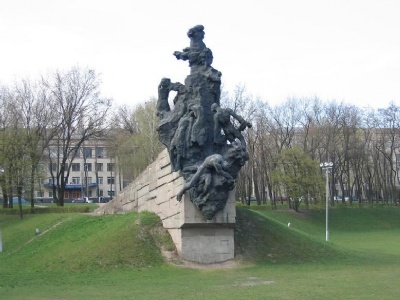

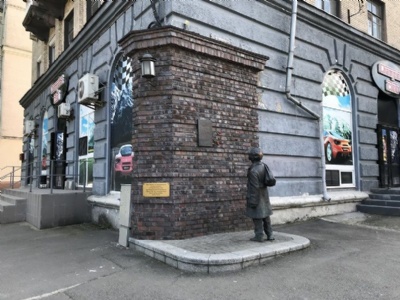

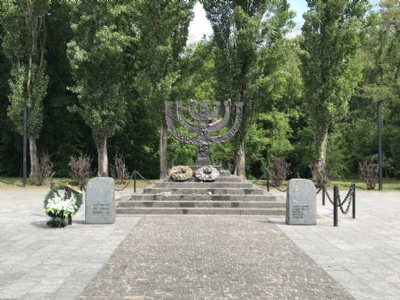
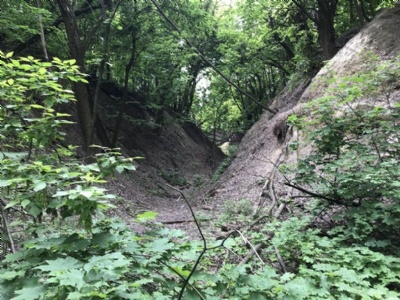
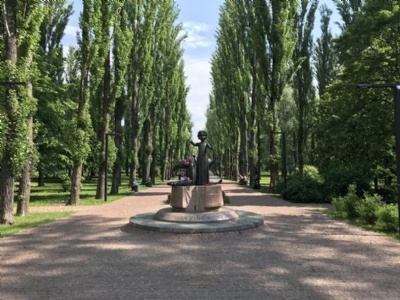
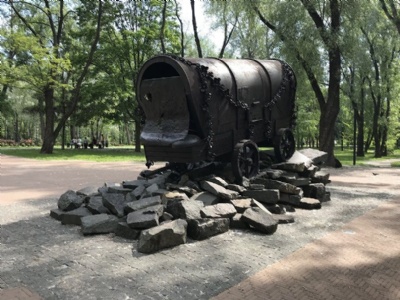
Of all the massacres carried out by the Einsatzgruppen, the one at Babi Yar is the most famous. In former Soviet Union Babi Yar was more known than the extermination camps in Poland. Babi Yar became a symbol in the Soviet Union of german crimes against soviet people (the Jews were seen as soviet citizens and not as Jewish soviet citizens). In 1961, Soviet poet, Yevgeny Yevtushenko, published a poem called Babi Yar. In 1966, the author Aleksander Kusnetzov (1929 – 1979) published the book, Babi Yar: A documentation in the form of a novel. The book was censored by the Soviet authorities, which also gave it a more correct political character. Both the book and the poem became widely known in the Soviet Union and contributed strongly to Babi Yar receiving an attention that other massacres in the Soviet Union and extermination camps outside the Soviet Union did not get.
The first monument at Babi Yar was erected in 1976 and is a typical Soviet architecture colossus. It provoked reactions and was controversial because it left out the Jews as a group and only mentioned the victims as Soviet citizens. All in line with the communist regime, which did not want to mention the victims by its real name. Only after the fall of communism were other monuments erected that specifically mention the victims as Jews. The Soviet monument remains the main monument and is the most famous and still stands in its original form. Although other smaller monuments as been put up around it.
The main monument is also not placed at the actual execution site, probably because this site was deemed more convinient at the time. The correct location is about 300 – 400 meters east of the monument. There is a monument in the form of a menorah (Jewish candlestick). In the forest behind the monument, you can still see traces of the ravine where the executions took place. Closer than this, it is probably not possible to come to the center of events in what has become the mass shootings equivalent to the gas chambers in Auschwitz.